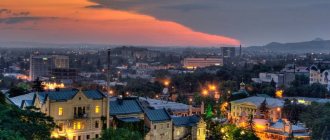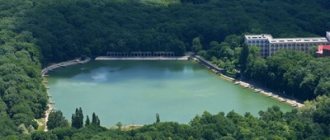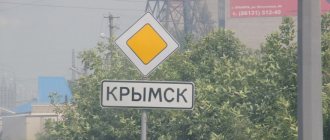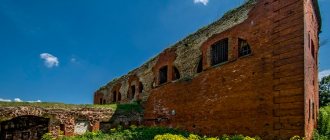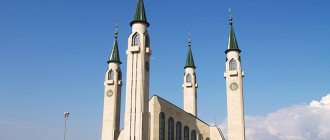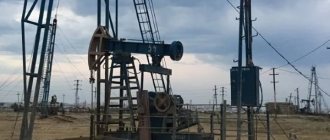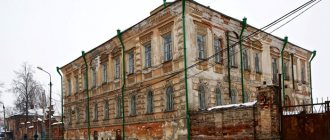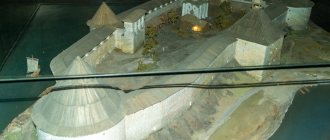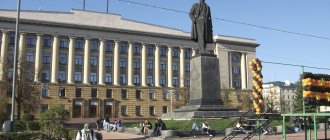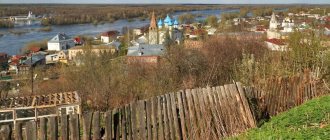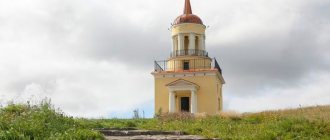In the southeastern part of the Stavropol Territory is the beautiful city of Mineralnye Vody. It is famous for its clean air, picturesque nature, spacious meadows, parks and special attractions.
The city received its name due to the fact that it is located near the deposit of Caucasian mineral waters, but there are none in the city itself.
In 1875, a railway junction was created here. From this moment the history of the city began. Before the railway, it was the possession of the Crimean Sultan Giray, whose name was later taken by the village of Sultanovskaya. It will be more comfortable to get to Mineralnye Vody by rail, and once you have done this, be sure to check out the sights of the city.
Mineral Waters welcomes its tourists with a beautiful, well-appointed railway station with a baroque colonnade. Mineralnye Vody Airport is considered the largest in the south of Russia; its modern navigation technologies should be given credit.
Mineral waters on the map of Russia
It is warm and sunny here, the climate in this area is considered mild and favorable. There are many health resorts, boarding houses and hotel establishments in Mineralnye Vody. This is a transport link with the airport, railway station and the federal highway M-29 Caucasus. The city opens the way to amazing places in the North Caucasus. It is surrounded by mountains and located on the Kuma River.
In Mineralnye Vody there are many health resorts offering various health programs. Medicinal mineral waters are prescribed to people of all ages, starting from the youngest years. Mineral waters are used for various procedures, including health baths.
Visitors note an incredible atmosphere of peace and comfort. Note that in Mineralnye Vody there are a large number of sanatoriums, and outside it there are unique attractions of local nature. Like, for example, a mountain called Snake with volcanic rock (almost a kilometer in height), which has bizarre curves. It is rich in all kinds of monuments, mines, drinking springs, and archaeologists work here. We also recommend visiting the shores of Kuma.
Having visited all the places you like in the city, you can go beyond its boundaries - for example, to the water park or to the Tersky Stud Farm.
Residents of Mineralnye Vody love to visit the city cultural park, with its green shady alleys, comfortable benches, fountains and memorials (among which, by the way, there is the Eternal Flame, as well as a monument to soldiers).
In general, the city is rich in monuments. Among them: General Ermolov, who commanded the Georgian Corps under the Tsar; monument to V.I. Lenin; monument to tank crews; monument to Sergius of Radonezh. Near the registry office building there is a statue of Peter and Fevronia.
Among the museums one can highlight the popular city local history museum (inherent in almost every city), the aviation museum and the house of the famous writer A. Bibik in the city.
Connoisseurs of architecture will not be left indifferent by the sculpture “Eagle” near the railway station building - as well as by the building itself, made in Baroque and created in the 50s. XX century. Believers will be happy to visit the Church of the Iveron Icon of the Mother of God, as well as the Church of St. Nicholas the Wonderworker and the magnificent Cathedral of the Intercession of the Most Holy Theotokos, built more than a quarter of a century ago, where the healing relics of the patron of the region, Theodosius of the Caucasus, are kept.
Let's take a closer look at the history of the city of Mineralnye Vody, attractions with photos and descriptions of which we will look at below.
Pyatigorsk
Pyatigorsk is a city that received its name due to its location near Mount Beshtau with five peaks. This is the oldest resort town of the Caucasian Mineral Waters, where famous personalities sought inspiration.
For a family holiday in Pyatigorsk, the City of the Sun water park is suitable. An exciting experience can be had on the cable car . There are several stops along the route - you will be able to see the beauty of the local nature and see the peak of Elbrus.
M.Yu. Lermontov and Pyatigorsk are twin words. Those who are not indifferent to the poet’s work will be interested in visiting the M.Yu. Museum-Reserve. Lermontov .
Taking care of your health in Pyatigorsk will not be difficult. Ermolovsky, Pushkinsky, Pirogovsky, Narodnye, Upper and Lower radon baths open their doors for tourists - diseases of the musculoskeletal system are treated here. Sulfide baths, massage showers, inhalations, physical therapy in the pool - there are a lot of healing procedures here, it’s easy to choose something suitable.
Daily housing in Pyatigorsk
Mineralnye Vody history of the city
The roots of the history of the city of Mineralnye Vody go back to the 19th century. At this time, the construction of the Rostov-Vladikavkaz railway was completed. At that time and until now, it is the main transport hub of the CMV and the entire North Caucasus. Its construction was completed in 1875. At the same time, the first trains were launched. Sultanovskaya station was erected at the point where the railway tracks left for Kislovodsk. It was named after Sultan Girey. The first residents were station workers. They took an active part in the construction and maintenance of the station.
From year to year the population grew more and more. Craftsmen began to come here to sell their goods. Thus, the settlement increased and this is how the village of Sultanovsky was formed.
A glass factory began operating on the territory of the village in 1898. This led to the growth of the mentioned settlement. The village changed its name to Illarionovsky in 1906. It was named so in honor of Illarion Vorontsov - Dashkov, who was the Caucasian governor. In 1921, the village merged with nearby stations. This is how Mineralnye Vody was formed. The population was 14 thousand people. Three years later, the Mineralovsky district was formed.
The city's rapid growth and development occurred in the first half of the twentieth century. At first it was opened, engaged in the processing of non-metallic materials. Then the Zmeyka enterprise was created, specializing in crushing stones. The year 1925 was marked by the opening of the airport.
During World War II, local residents were heroes. Many enterprises re-specialized in military production. They produced equipment and weapons needed in this difficult time. In 1942, the city was occupied by German troops. In 1943 he was liberated by Soviet soldiers. After the war, a lot of effort was made to restore the city: they built enterprises, areas for residents, and restored damaged facilities. And later the city became a resort.
Aviation Museum
It is located in the city center. On the territory of the museum there is a collection of air transport: a Po-2 biplane, Mi-1 and Mi-2 helicopters, a Li-2 aircraft, An-2, Yak-40, Tu-154. Not far from the equipment there is a stand on which photos of the first flights and important documentation of the airport and air terminal are mounted.
Location: Zavodskaya street - 73.
Mineralnye Vody attractions photo with description: Station
One of the main attractions of Mineralnye Vody is, of course, the railway station. Its construction is the beginning of the history of the city. After three years, the village became an officially populated area.
When the station opened, it didn’t look like it does now. In 1957, a modern building was built, the opening of which coincided with the anniversary of the October Revolution. The modern building was picturesque, thanks to its snow-white columns.
In the direction of Kislovodsk in the eighties of the nineteenth century, a branch of the railway was created. It was electrified only in the thirties in the twentieth century. Then new branches were built.
In the eighties of the nineteenth century, a branch of the railway was laid, but only in the thirties of the 20th century was it connected to electricity. Later, new branches of the road were built. On the docking route, the Mineralnye Vody station was formed, which is an important link connecting Russia and the North Caucasus, as well as the resorts of Stavropol.
Nowadays, tourists are interested in observing the picturesque station building with snow-white columns, made in the Baroque style.
The station is designed for 1,750 people. It has a waiting room, a restaurant, a pharmacy, kiosks and a first-aid post. In front of the station, the sculpture “Eagle” is erected - a majestic bird with spread wings, holding a snake in its claws. The eagle is a symbol of spiritual strength and love of freedom. And he is also a symbol of the Caucasus. There is a legend that an eagle, which was bitten by a snake, was cured after drinking mineral water.
On the way to the entrance to the station, there is an alley of blue spruce trees, along which there are benches for rest. Both tourists and locals walk here. And in front of the station there is another monument dedicated to the Stakhanovites of the 30s of the 20th century.
Mineralnye Vody Station on the map:
Let's continue to consider the topic: Mineralnye Vody attractions photos with descriptions.
Where to stay in KMV
This question is not as easy to answer as it seems, because this answer directly depends on the main purpose of the trip - to receive treatment or have fun (the resort is therapeutic). If you are going for treatment, then before choosing a city, decide what you are going to treat or what to be treated for. You can’t make a mistake here, as a famous character used to say. It is appropriate, of course, to send the reader to a doctor, as required by law - “to consult with a specialist,” but I think I still have the right to give some direction. In general, if your stomach is acting up and your intestines don’t give you peace, Essentuki is for you. Irrigate with healing water from all points of view. If your nerves are acting up and your heart is beating too fast (we brush aside the symptoms of falling in love - they don’t treat it here) - come to Kislovodsk, if your kidneys are falling off - welcome to Zheleznovodsk. Everyone is welcome here! Of course, treatment should be approached wisely: the ulcer will not be cured over the weekend even if you do not move away from the source; renal colic will not go away with a couple of procedures. And mud therapy with a health path is useless if your stay is less than 21 days. If the length of stay is less than 10 days, then you should completely forget about treatment. You are just a tourist and you should choose your destination city not based on the “what hurts” principle, but based on their comfort, cost of living and other things that accompany a regular vacation. This does not mean at all that your health will not improve - walks in the freshest and most healing air have never harmed anyone, sound sleep in silence, Caucasian cuisine, wine and a good mood will heal your nerves in a couple of days. So in CMV treatment is included in any case. So, what does the resort offer in terms of accommodation? Let's return to the goal again: if everything is real: procedures, diet, getting up, lights out, then you should go to a sanatorium. There are many of them here. There are modern and expensive ones, there are pre-revolutionary ones, there are ministerial ones (in the latter the tariff is double: accommodation + taxes you have already paid). But the sanatorium is not suitable for everyone: breakfast until 9 am, bedtime at 11. In general, a hospital with a light regime. Such a vacation or really for honey. indications or for the very disciplined. For everyone else, there is a large selection of hotels and a rapidly growing private sector. If you choose a city to spend weekends, holidays, vacations (without fanatical treatment), then the best option is Kislovodsk. Why? On average, the number of clear days per year in Kislovodsk is about 150, while in Pyatigorsk - 98, in Zheleznovodsk - 112, and in Essentuki - 117. Argument? Another one. The largest resort park is 950 hectares. For comparison, in Zheleznovodsk - 203, in Essentuki - 51. This is also a reason, since walking in the KMV is something that can be consumed with guaranteed health benefits, in any quantity and without a doctor’s prescription. But if you couldn’t find a suitable option in Kislovodsk, feel free to look in Essentuki. It’s 20 minutes by train to Kislovodsk, the same to Pyatigorsk and the most unpalatable mineral water. My favorite is #17. There is nothing special to say about Zheleznovodsk (we simply haven’t been here) except that it is the most difficult to reach city in terms of public transport. There is no station here and you need to take a taxi or minibus (albeit a very short distance - about 5 km) to the city from the Beshtau platform (this is between Pyatigorsk and Mineralnye Vody).
Fire of Eternal Glory Mineral waters
The eternal flame - a sign of the Great Victory over Nazi Germany - burns in almost every city. Such monuments are made in a very restrained form, because Victory Day also contains a shade of sorrow. In the city of Mineralnye Vody, a memorial was erected with the name “Fire of Eternal Glory” - in memory of the residents who gave their lives in battles for their Motherland during World War II. The opening of the complex took place 31 years after the Victory - on May 9, 1976.
The details of the monument are symbolic, each of them tells a story about something. From above it looks like a regular pentagon, from the side it looks like a fire pit. Thirteen urns with soil from the hero cities, which arrived on the opening day of the memorial, are also part of the memorial. Five pylons contain five bas-reliefs with iconic images.
The pylons are two pillars made of concrete; the stone that is located between them means the inaccessibility of the Caucasus mountains, which has been glorified here from century to century. The main bas-relief facing the entrance is called “Motherland”. He says that during World War II, 18,000 mineral workers went to the front. Of these, 7,500 did not return home.
During the war years there were other events in Mineralnye Vody. The Nazis killed almost 10,000 of the city's remaining residents—many of whom were buried in the anti-tank ditch near the glass factory during the occupation of the city in 1942. The city was and remains an important railway junction; previously the Nazis used it to supply their army.
The third bas-relief on the “Motherland” side symbolizes the inhumane attitude of the Nazis towards people on this land.
The mass graves of mineral workers who died in the name of the Motherland, marked with tombstones, are located on both sides of the monument. The Walk of Fame at the entrance to the complex contains bronze names of soldiers who defended their Fatherland.
The tradition of the solemn procession on May 8 has become an integral part since the opening day. The city is closing streets and driveways. Those walking follow from the monument to V.I. Lenin to the memorial itself. Police on motorcycles, military personnel, and drummers accompany this procession. And, of course, our dear veterans, who, unfortunately, are slowly leaving us... In honor of the defenders of the Motherland, bouquets, wreaths and flowers are laid on the monument.
Fire of Eternal Glory on the map:
Mount Zmeyka Mineral waters
Mount Snake still remains a unique place and landmark of Mineralnye Vody. Its height reaches almost one kilometer (994 meters). Translated from Turkic “Zhlak-tau” means “snake mountain”. Due to the rugged slopes of the mountain with ditches and winding ravines, it was so named. Today, in the process of mining, quarries and adits can be observed in this place. And as a result, there are no ravines.
According to another version, it is known that a huge number of snakes, including poisonous ones, lived on the slopes of the mountain! But there is no historical evidence for this. The oldest residents don’t remember this either. Now, there are very few snakes here, but representatives of the animal and plant world are very diverse. The flora is represented by sixty tree species and rare plants. Among them: euonymus, ash, lily and rose hips.
It has been proven that the origin of the mountain is magmatic. Beshtaunite is a special rock from which the picturesque rocky outcrop of the upper part of the mountain is formed. It is very valuable for the production of crushed stone used in construction, which is confirmed by its active mining. The lower part is formed by shale. It has a stone processing industry.
Of particular interest are the monuments erected on the mountain. They were erected as a reminder of the Great Patriotic War. The first is dedicated to the workers of those very quarries who died during the war. The second is to a group of paratroopers who landed in 1942.
It is also impossible not to mention that the mountain has a deposit of special mineral waters located on the western slope. And at the top you can see stone crosses. Recently, a strange stone structure was found on the mountain. It turned out that these are the remains of household items, dishes, which date back to the 7-9 centuries AD. And a little higher up an ancient altar was discovered. It was represented by a pile of large stones, on the steep slope of which prayers and even sacrifices were carried out.
Two holy springs are located at the foot of Mount Snake. One of them is named after Saint Theodosius, and the other is called the Holy Source. It is built in the form of a stone arch, from which a small pool extends. By the way, you can get to the mountain yourself without any problems. You can have a picnic there or just take a walk. Group excursions come here, and lovers of active recreation climb to the top, which is quite difficult, since the mountain is difficult to conquer.
Mount Snake on the map:
Considering the topic: Mineralnye Vody attractions photos with descriptions, let's turn to the holy places of this city.
Chegem Gorge
The place is located 100 km from Mineralnye Vody on the Chegem mountain river. These areas are full of various waterfalls. For some, water flows down in small drops, for others, it falls in a wide stream with maximum speed. The most powerful waterfall is considered to be the Maiden's Spit.
In winter, ice pillars similar to stalactites line up in the gorge. This is a mesmerizing sight that is worth a look. And in the summer, tourists love to visit the open-air museum in the village of Verkhny Chegem. While walking along the gorge, you should not forget about the wild animals that you may encounter along the way. Among them: lynxes, foxes, wolves. The forests are also home to wildlife: roe deer, deer, martens, hares. It is much more convenient to travel here by car.
Cathedral of the Intercession of the Blessed Virgin Mary
One of the most revered holy places in the city of Mineralnye Vody is the Cathedral of the Intercession of the Blessed Virgin Mary. The relics of the patron saint of the Stavropol region, Saint Theodosius of the Caucasus, are kept here. During his lifetime he was known as Elder Theodosius. The years of his life are 1868-1948. The elder was considered a miracle worker. It is believed that his remains are endowed with an inexplicable power that can work miracles. Thousands of believers make a pilgrimage to the cathedral every year.
By the way, the Cathedral of the Intercession of the Blessed Virgin Mary is also interesting for those who are interested in various holidays of architecture and history. After all, the cathedral consists of many buildings. These are the church, the service premises and the temple wall. The design of the buildings belongs to the architect Makkheyev. They are made in an eclectic style made of red brick. In addition, the architecture contains features of the architecture of Ancient Rus'. Therefore, the cathedral is very beautiful and attracts the attention of many.
There is also something to see inside. It is worth noting the chapel dedicated to the Tikhvin Icon of the Mother of God. According to legend, it is known that she was found under a tree where the cathedral is located. They considered this a sign from above and built a temple on this site. It was built from 1992 to 1997. This is a fairly short period for the construction of such a facility. In the nineties, the mayor of the city chose the site where construction began. In 1990 this place was consecrated.
As a result, it turned out that on the lower floor there is the Tikhvin Icon of the Mother of God, the northern aisle was built in honor of Sergius of Radonezh, and the southern aisle was built in honor of John the Warrior Martyr. The carving of the iconostasis, made of wood, was carried out by the best craftsmen of that time. The interior painting is done in a beautiful elegant style. The design belongs to a group of Moscow artists.
On Sunday services, the ringing of the cathedral's eight bells can be heard throughout the city.
The blessing for the construction was given by Metropolitan Gideon. On October 14, 1997, the church was inaugurated. In August 1998, the relics of Theodosius of the Caucasus were transferred to the cathedral. A religious procession was held from the Mikhailo-Arkhangelsk region to the new Intercession Cathedral. Now parishioners come to church for services and prayers. It is recommended to attend church during service hours.
Cathedral of the Intercession of the Blessed Virgin Mary Mineral Waters official website:
https://mineralnye-vody-1.cerkov.ru/
Cathedral on the map:
Reviews and advice from tourists
Judging by the reviews of tourists, the most popular month for traveling to Kislovodsk in winter is November, when the weather is still warm, almost autumn, or for the New Year holidays. Vacationers are sure to visit Kurotny Prospekt and Kislovodsk Park, look at the beautiful architecture and, in some cases, travel outside the city. Almost everyone is satisfied with their vacation, not regretting the time of year at all.
- “Second time to Kislovodsk. January 2017" by miljkovic14;
- “Waiting for snow or New Year in the provinces” from Olga;
- “A Date with Winter: Christmas in the Elbrus Region” from Elena Ch.;
- Photo album “Caucasian notebook” and “Kislovodsk. A city returned to tourists” from Vladimir Shefer
All tourist reviews about Kislovodsk on Tourister. RU
Colonnade Photo: © Vladimir Shefer
If you are planning a short trip or at other times:
What to see in Kislovodsk in 1 day What to see in Kislovodsk in summer and autumn
Articles that will always come in handy:
- What to bring from Kislovodsk
- Tips on how to get to Kislovodsk from different cities of Russia
Church of the Annunciation of the Blessed Virgin Mary
It is interesting that the Church of the Annunciation of the Blessed Virgin Mary is one of the oldest churches in Mineralnye Vody. And this despite the fact that it was laid in 2010. This happened because since 1888, on the site of the new church there was an old temple, which was demolished in the thirties of the twentieth century. Nowadays, the church is located near the music college named after V.I. Safonova. Previously, there was a picturesque square, and even earlier, the Church of the Intercession of the Mother of God, which was the first in Mineralnye Vody.
It is believed that the temple was built in 1888 in honor of the rescue of Alexander III and his family. Then, near Kharkov, there was an accident on the railway, in which the royal train was involved with the emperor and his family. The fact that they were saved was considered a miracle. A church was erected in honor of this.
But what is the connection between the accident and the temple? But the fact is that funds for the construction of the temple were donated by railway workers. Three years after construction, the church was illuminated, which was reported to Emperor Nicholas II. He was very grateful for this.
The temple is popular among believers. Despite the fact that people came to the service from all over the city, everyone was accommodated inside, since the temple was large. However, it was demolished in 1936, like many other churches. In 2010, the groundbreaking of a new facility took place. In 2012 it was consecrated in honor of the Annunciation of the Blessed Virgin Mary and the Ever-Virgin Mary. There is also a chapel of the holy martyr Tatiana.
The temple is very beautiful outside and inside. It was built of brick in the Old Russian style. Its height is thirty-two meters, there are six domes.
The church building accommodates a large number of parishioners. The bell tower is decorated with a beautiful gilded dome. The author of the project is the famous architect Mikhail Lesov. The painting inside is done in the canonical style.
The Church carries out active spiritual and educational work. The church runs a Sunday school for children of all ages. Theological interviews, educational liturgies and classes for adults are also conducted.
Temple website:
https://mineralnye-vody-3.cerkov.ru/
Temple on the map:
Church of St. Nicholas the Wonderworker
This church houses a sacred relic, which is a place of pilgrimage for believers. The icon bears the name “Quick to Hear of Athonite”. It was written a long time ago in a monastery on Holy Mount Athos. She has inexplicable power, and many come to her for prayer and blessing.
The church is amazing inside and out. There are no frills. It was built in the fifties of the last century. It was named in honor of the Intercession of the Most Holy Theotokos, and then renamed and consecrated in honor of St. Nicholas the Wonderworker in the 1990s.
The church is simple in architecture and built of brick. Outside, it is surrounded by a fence with an arched entrance gate. The shape of the church is rectangular. The interior is simple. There are no paintings on the walls and vaulted ceiling, but there is on the main altar.
There are no benches in the temple. Therefore, believers stand during the service. The “Quick to Hear” icon is the main icon of the church. There are always a lot of people in the temple, especially on Sunday. It is best to attend church on some Christian holiday. Metropolitan Gideon renamed the temple.
In 1937, after the demolition of the cathedral, a decision was made to build a new church. But due to wartime there were no funds for construction. And this was objectionable to the Soviet authorities. But despite all the difficulties, in 1950 the church was built and named in honor of the Intercession of the Most Holy Theotokos. And then in 1997 it was renamed in honor of St. Nicholas the Wonderworker.
Church website:
https://mineralnye-vody-2.cerkov.ru/
